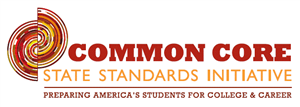Posted by Michael Haran on Feb 6, 2014
By Michael Haran
Press Democrat, Santa Rosa, Ca.
February 6, 2014
George F. Will’s article (The Common Core is Worth Opposing 1/17/2014) is amazing in its “conservative” mentality. He bashes the Common Core Standards as a continuation of “Fifty years of increasing Washington inputs into K-12 education that has coincided with disappointing cognitive outputs from schools.” Hello? This is exactly why the Standards were enacted.
inputs into K-12 education that has coincided with disappointing cognitive outputs from schools.” Hello? This is exactly why the Standards were enacted.
Will’s reminds us that the 1965 Elementary and Secondary Education Act, the 1970 General Education Provisions Act and the 1979 law that created the Department of Education are all federal intrusions into what he calls, “state and local responsibility for curriculum control.” He complains that “what begins with national standards must breed ineluctable pressure to standardized educational content.”
He notes that, “Washington already is encouraging the alignment of the GED, SAT and ACT tests with Common Core. By a feedback loop, these tests will beget more curriculum conformity. All this, he contends, will take a toll on parental empowerment.”
 What Will fails to recognize, or admit, is that all his criticisms are why the standards were initiated. He says that “it is more likely there will be a half a dozen innovative governors than one creative federal education bureaucracy.” With this remark Will is right. The Common Core Initiative was established by the National Governors Association, many of which are Republicans, and the Council of Chief State School Officers based on a 2004 report titled, “Ready or Not: Creating a High School Diploma That Counts.” It found that both employers and colleges are demanding more of high school graduates and that current high-school exit expectations fall well short of demands.
What Will fails to recognize, or admit, is that all his criticisms are why the standards were initiated. He says that “it is more likely there will be a half a dozen innovative governors than one creative federal education bureaucracy.” With this remark Will is right. The Common Core Initiative was established by the National Governors Association, many of which are Republicans, and the Council of Chief State School Officers based on a 2004 report titled, “Ready or Not: Creating a High School Diploma That Counts.” It found that both employers and colleges are demanding more of high school graduates and that current high-school exit expectations fall well short of demands.
In his article “Why Our Nation Needs Common Standards,” (Hechinger Report, July 18, 2013) Jonah Edelman said “The Common Core Standards are clear and high standards for what every child in the United States should know by the end of each grade and are a practical and effective solution for a system that now dooms some students to learn far less than their peers who happen to live in other states.
They benefit students in states with weak academic standards. They benefit teachers who want to access and share the best possible lesson plans. They benefit parents who have a right to know that an “A” in school or a “proficient” on the state test actually means their child is on track.
Will insinuates that Common Core roll out is experiencing the same “federal touch” that has given us HealthCare.gov. What he doesn’t say is that all new government programs experience roll-out problems. Social Security did, Medicare Part B did and Common Core will.
The biggest problems are cost and technology. Georgia spends 8-9 dollars per student to administer five-subject tests compared to the Common Core’s new per-student cost estimate of $29.50 for just two tests. Only 28 percent of Oklahoma school districts have the infrastructure necessary for the new exams. Both of these problems will be addressed as the $4.35 billion Race to the Top money is released to states when the Common Core Standards are initiated in the 2014-15 school year.
People like George Will look at progressive education as a bad thing. They don’t like change even though change is inevitable. Technology has made the U.S., like the world, a smaller place. Education conformity makes America’s workforce more efficient which allow people to move to where the jobs are. Will calls Bill Gate’s remark: “It’s ludicrous to think that multiplication in Alabama and multiplication in New York are really different,” flippancy. I call it common sense – I call it Common Core.
Read More
Posted by Michael Haran on Apr 20, 2013
Close to Home
Teachers Need the Tools
By Michael Haran
4/19/2013
Published in the Press Democrat 4/20/2013
After reading Andy Brennan and Simone Harris’ Close to Home article (A teacher’s perspective on improved learning PD 4/4/13) and Bill Gates article (Here’s a fairer way to evaluate teachers PD 4/5/13) on teacher evaluation neither article addressed the new curriculums that are now being developed by K-12 textbook and eBook publishers and the evolution of K-12 teaching methods.
Under Obama’s Race to the Top states are required to meet three main educational criteria: adoption of rigorous academic achievement standards; a program to focus on turning around low performing schools; and the most contentious provision, an accountability system that would involve using test scores to evaluate teachers and principals.
In 2010, California became one of 45 states to adopt the new Common Core State Standards (CCSS) Initiative to meet these criteria and the transition is now under way. Assessments aligned with the standards are also being developed and are expected to be in place for the 2014-15 school year, replacing the STAR tests. The new standards and skill requirements have been developed with the goal of creating consistency across the country.
The California Legislature in March 2011 suspended the adoption of instructional materials until the 2014–15 school year. This was due partially to budget cuts but also to allow time for publishers to adapt instruction materials to the Common Core State Standards (CCSS).
Just like a good race car mechanic a teacher needs sound methodology and precision tools to be successful. Anyone who studies K-12 education knows that the industry has long needed a makeover. Everything evolves and we are now watching an evolution in teaching structure. Many school districts are experimenting with, if not outright adopting, the progressive teaching/learning model called “Flipping the Classroom.”
In flip teaching, the student first studies the topic by himself, typically using video lessons created by the instructor or those provided by an Open Education Recourse (OER), such as the Khan Academy. In the classroom, the pupil then tries to apply the knowledge by solving problems and doing practical applications. The role of the classroom teacher is then to tutor the student when they become stuck, rather than to impart the initial lesson. This allows time inside the class to be used for additional activities, including use of “differentiated instruction” which is more student specific and “project-based learning” which is the practical application.
In another progressive teaching/learning model North Carolina State University College of Education has developed program which they call the FIZZ concept. With this program students video themselves reciting a lesson. The object is to allow students to revisit the video to evaluate and analyze not only what they have learned but also what their peers have learned. The objective is to give the student “ownership” of the lesson which they call the highest level of learning.
Along with the evolution of teaching methodology the next generation of K-12 instruction materials needs to be written to align to these and other progressive teaching models. The publishers now have an opportunity to incorporate modern learning technology with the four predominate student learning styles which are: Linguistic (“word smart” they learn by writing and reading); Logical-mathematical (“number/reasoning smart) Spatial (“picture smart” they learn from images); Bodily-Kinesthetic (“body smart” they need to be moving to learn). I think “Bodily-Kinesthetic learners are many times misdiagnosed with having ADD.
If you want to increase test scores give teachers curriculum that develops the coveted goals of critical thinking, collaboration and communication in all students. You can’t win the race without the right tools.
Michael Haran is research director for the Institute of Progressive Education and Learning.
Read More
 inputs into K-12 education that has coincided with disappointing cognitive outputs from schools.” Hello? This is exactly why the Standards were enacted.
inputs into K-12 education that has coincided with disappointing cognitive outputs from schools.” Hello? This is exactly why the Standards were enacted.  What Will fails to recognize, or admit, is that all his criticisms are why the standards were initiated. He says that “it is more likely there will be a half a dozen innovative governors than one creative federal education bureaucracy.” With this remark Will is right. The Common Core Initiative was established by the National Governors Association, many of which are Republicans, and the Council of Chief State School Officers based on a 2004 report titled, “Ready or Not: Creating a High School Diploma That Counts.” It found that both employers and colleges are demanding more of high school graduates and that current high-school exit expectations fall well short of demands.
What Will fails to recognize, or admit, is that all his criticisms are why the standards were initiated. He says that “it is more likely there will be a half a dozen innovative governors than one creative federal education bureaucracy.” With this remark Will is right. The Common Core Initiative was established by the National Governors Association, many of which are Republicans, and the Council of Chief State School Officers based on a 2004 report titled, “Ready or Not: Creating a High School Diploma That Counts.” It found that both employers and colleges are demanding more of high school graduates and that current high-school exit expectations fall well short of demands.



